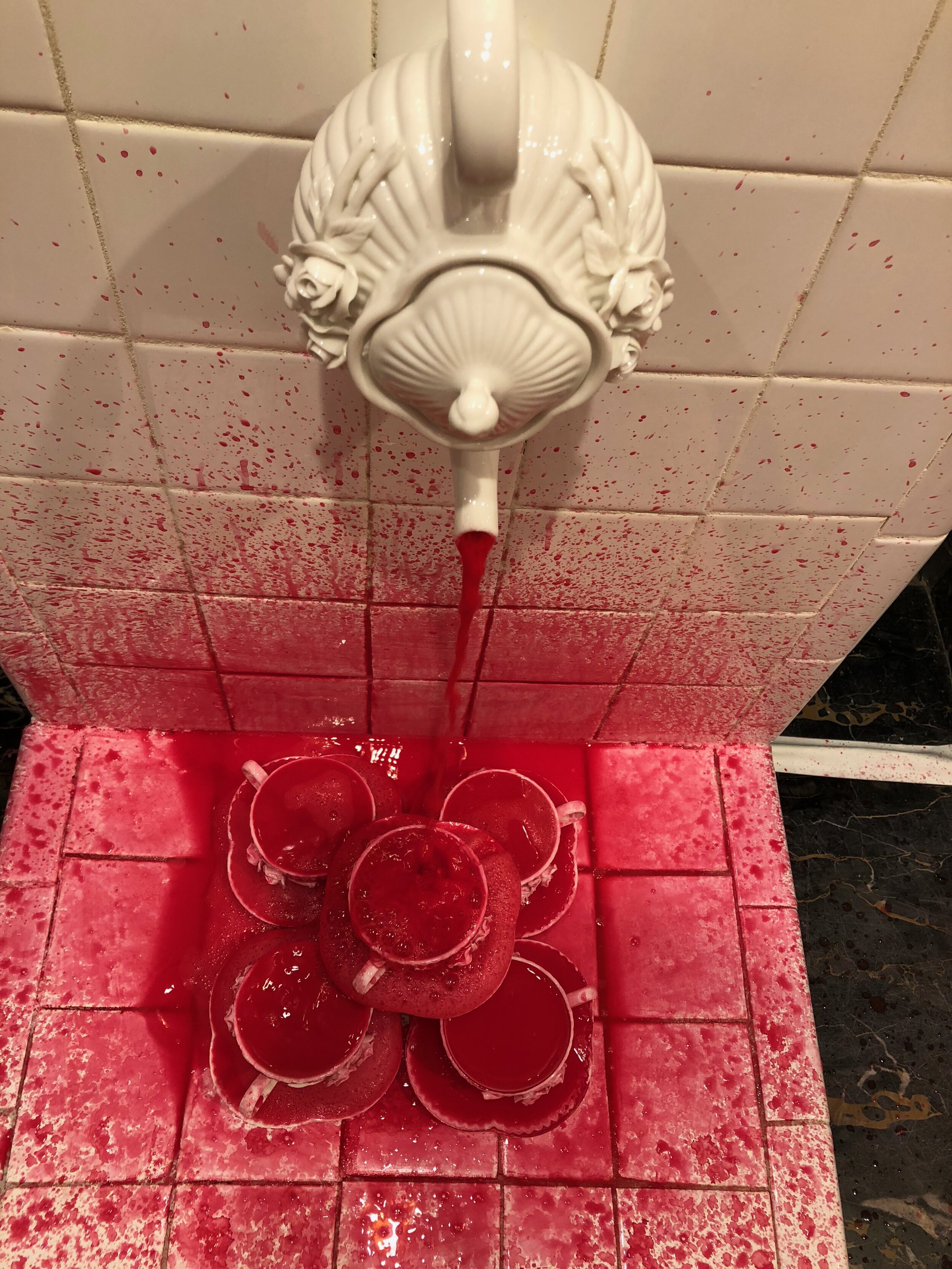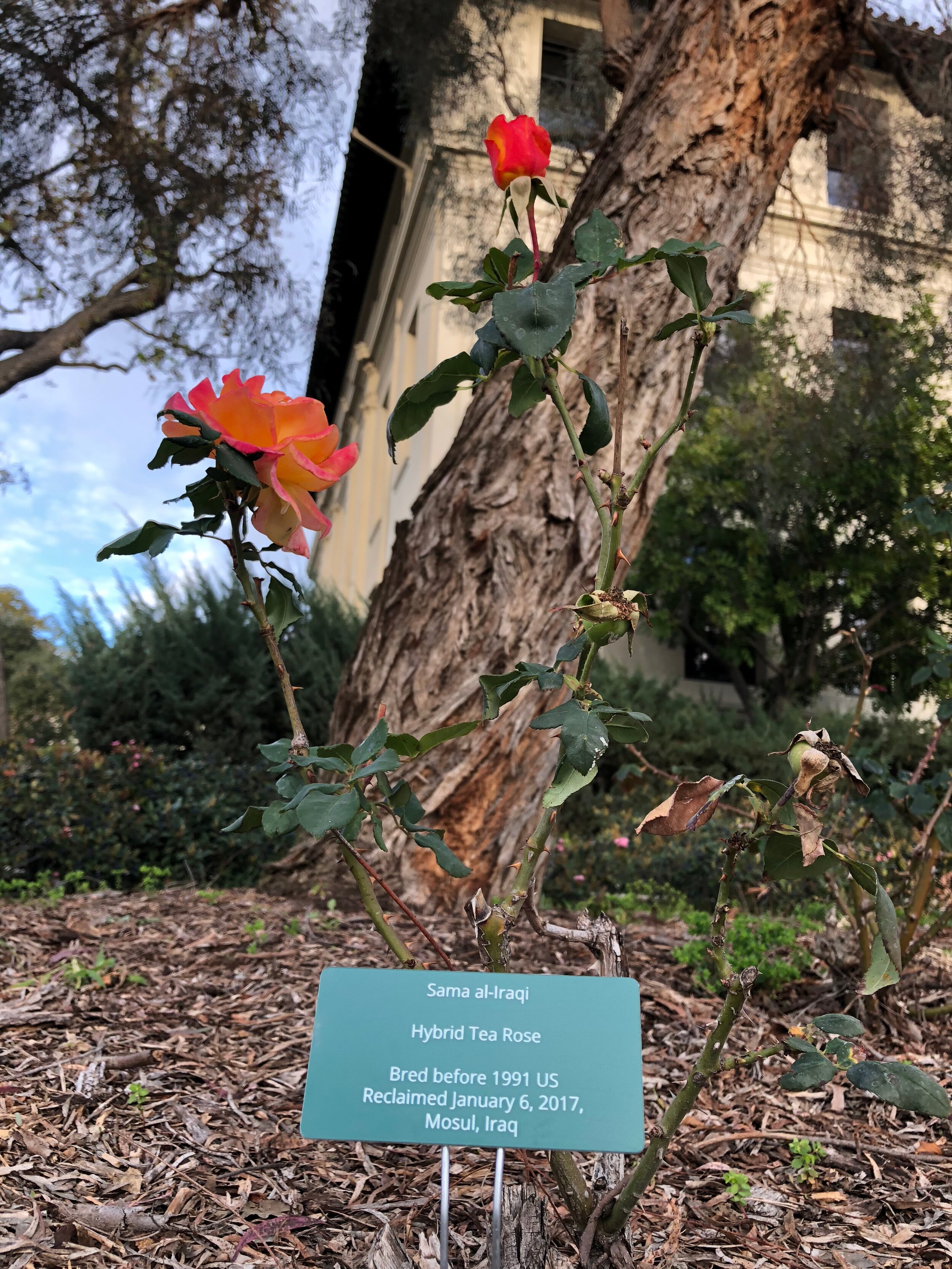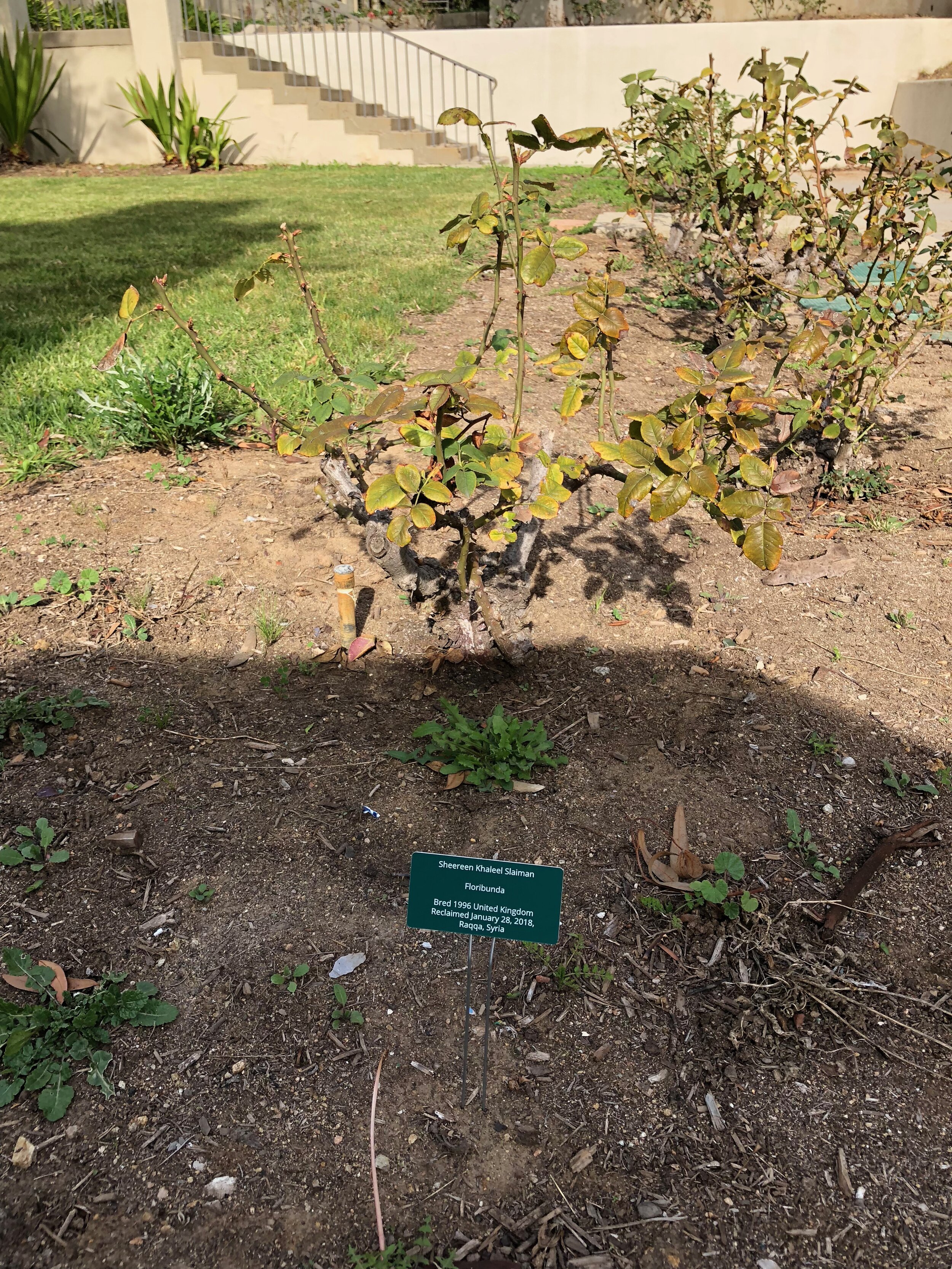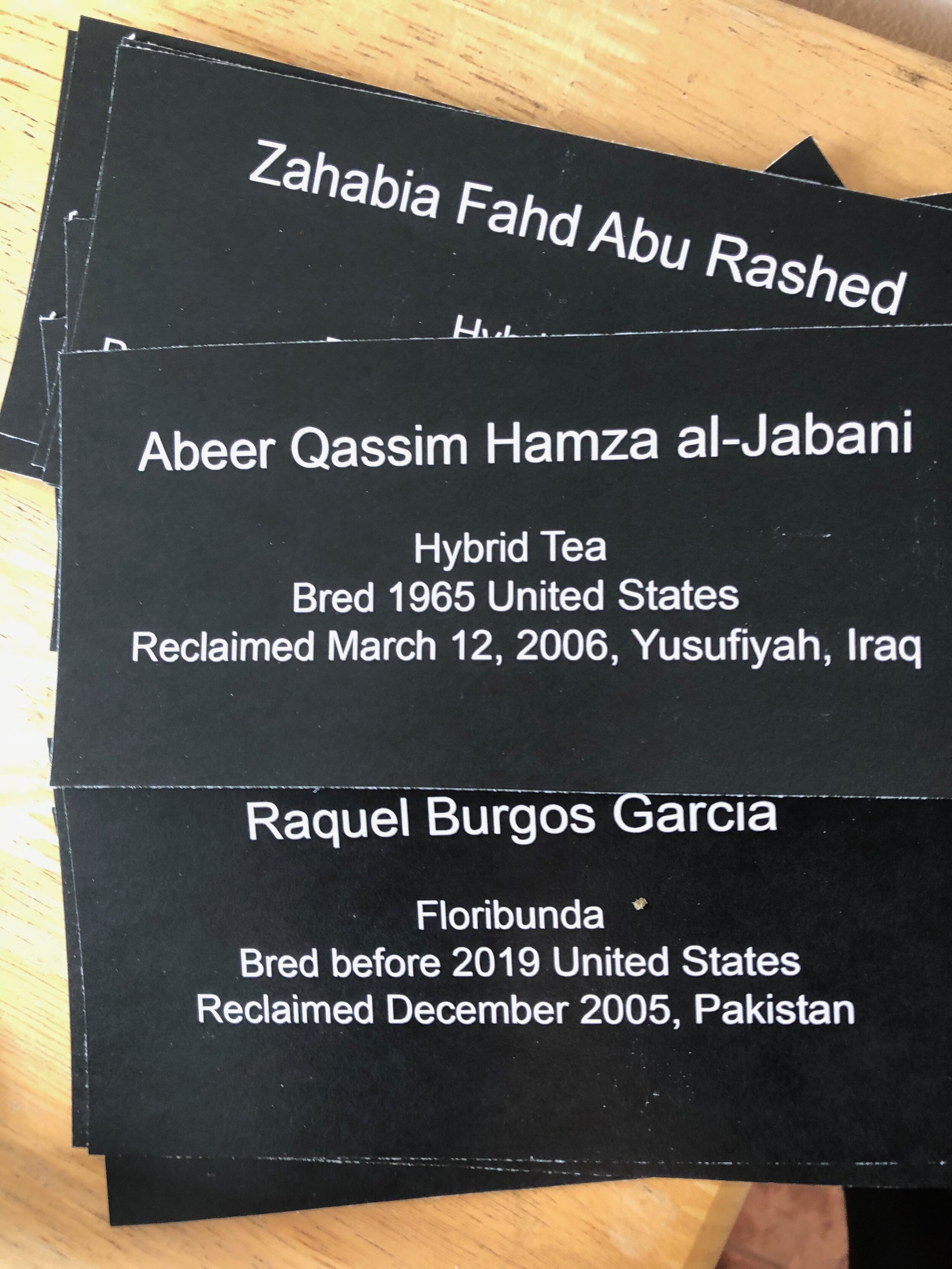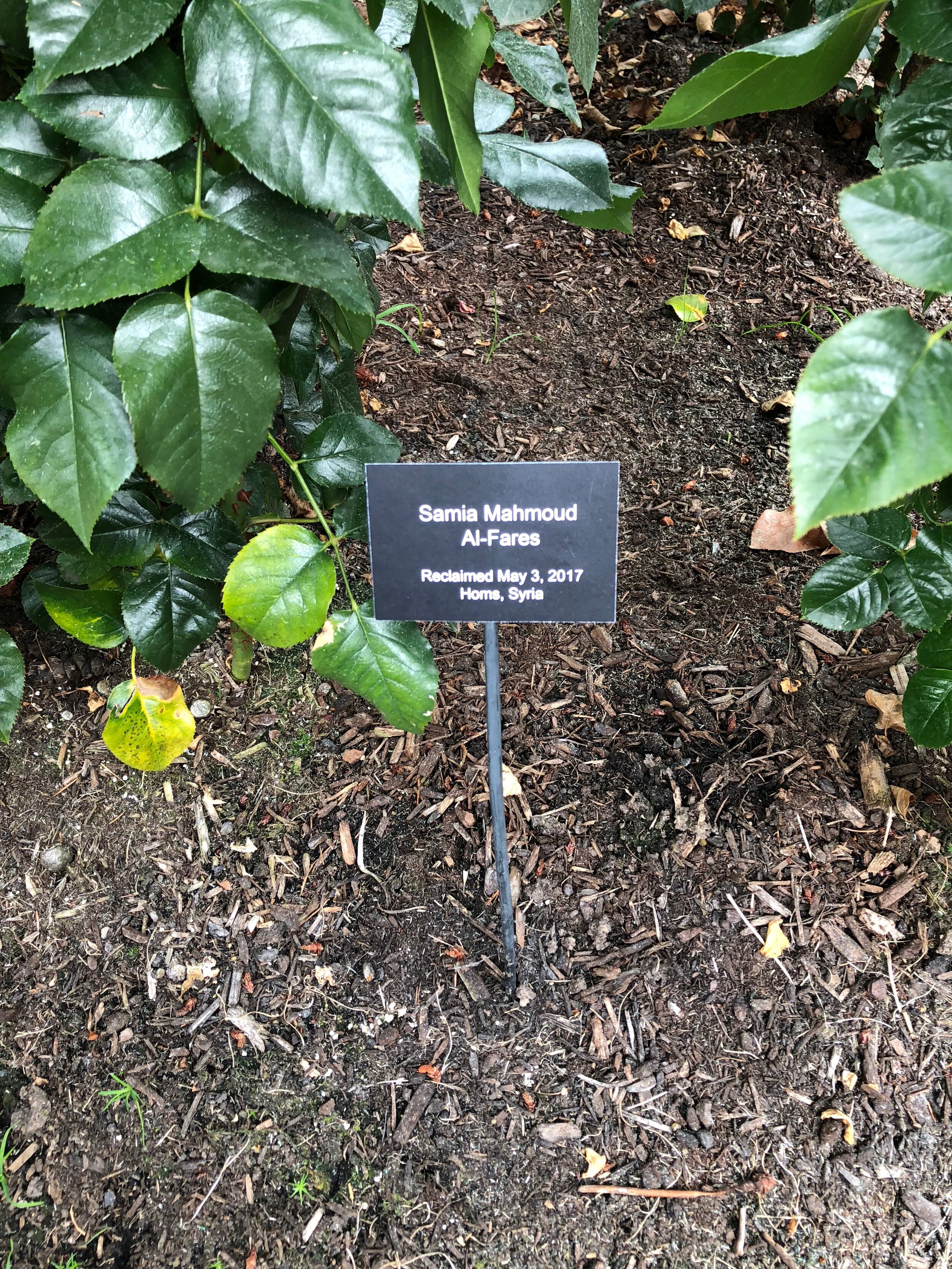GOLESTAN REVISITED: Exhibition and Rose Renaming (2018-2019)
Roses are often associated with formal European gardens and rarified beauty. Less known is that many of these cultivars were imported to Europe, then transplanted and hybridized, during the violence of the Crusades by medieval royalty such as Robert I who led the Second Siege of Damascus. Popular plantings tended by rosarians in Western gardens draw their lineage from Rosa gallica, used for perfumes, teas, medicine and food in the geographic areas of Persia, Indus Valley and the Levant— known today as Afghanistan, Iran, Iraq, and Syria. Ancient Persian folklore also tells the story of a nightingale who fell so in love with her white rose that she clutched its thorns and bled resulting in the deep color of the red damask, Rosa damascene.
The name Golestan translates from Farsi to mean land of the flowers and is also the title of a seminal collection of poetry by the 13th Century Iranian poet Sa’adi. Drawing upon the metaphor of the rose, Golestan Revisited is a multicomponent project that I launched in 2017 after eight years of following news stories of women and girls who had died in neo-crusade civil wars and, simultaneously, informally researching the breeding and origin of roses. These roses that were transplanted to Europe from the SWANA (South West Asia North Africa) region starting in the 12th Century will be employed in the project to simultaneously symbolize and commemorate women and girls— sometimes nameless in their passing— who have died in contemporary 21st Century attempted coups and wars against “terror” and/or by the reactive Islamist occupations in and beyond the countries under attack. The image of the rose as a literal and symbolic captive is the entry point to contemporary facts of perpetual war, occupation, and resistance.
Golestan Revisited connects current wars to early practices in territorial mapping and resource nomenclature that served as a means to take possession, remove local agency, numercise, and classify both plants and people. The project was initially inspired by the story of 26 year old Hasna Ait Boulahcen who was murdered during a November 2015 raid in Paris, when police had a standoff in her apartment intending to capture or kill, suspecting her estranged family who had entered the apartment to hide to be Islamic State responsible for the Bataclan attacks. The audio of her begging the police for her life as well as her background story triggered my need to document and find evocative ways to tell the stories of femmes like Hasna. After learning about the ways roses had been transplanted and hybridized from the SWANA region, I deepened my research and then started renaming common roses to honor the women whose names I saw and heard in fast disappearing news cycles.
The first sanctioned iteration of Golestan Revisited was a gallery exhibition installation and public interventions in renaming roses on botanical nomenclature placards at Occidental College in Spring 2018. This marked Golestan Revisited’s official public launch which brought interest and provided structure for the next phases of project development.


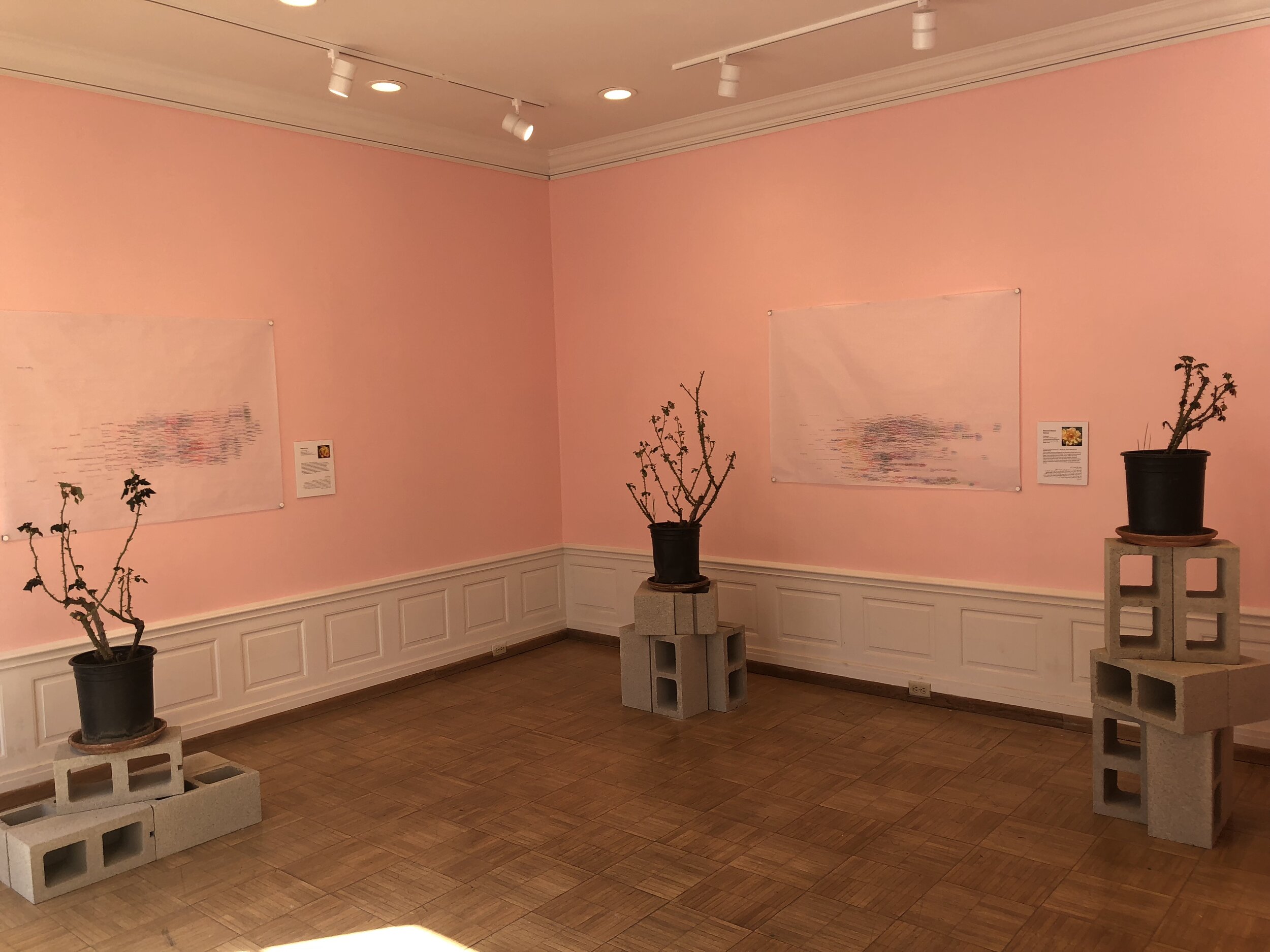
Golestan Revisited, Exhibition Installation, Weingart Gallery, Occidental College March 22-April 15, 2018
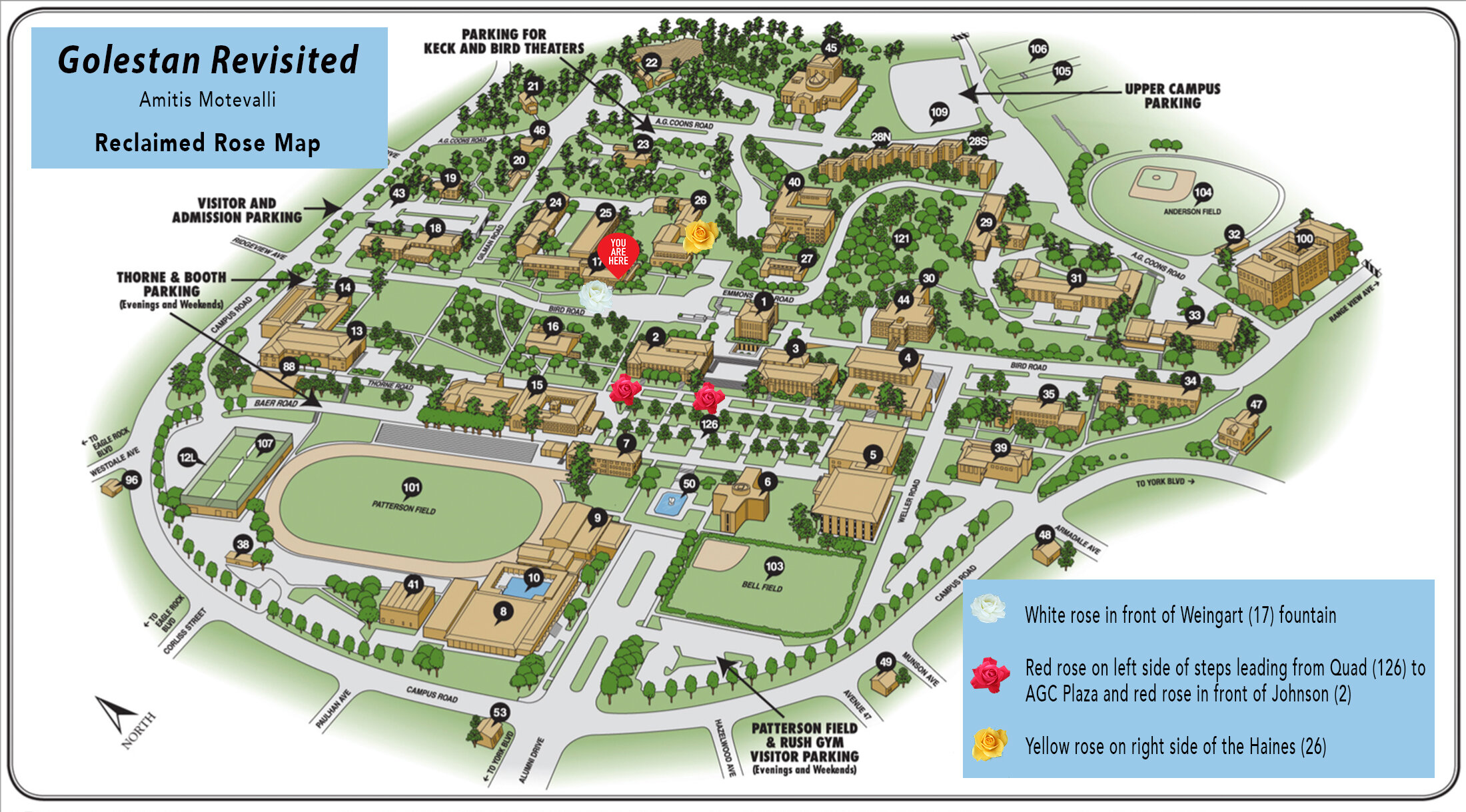
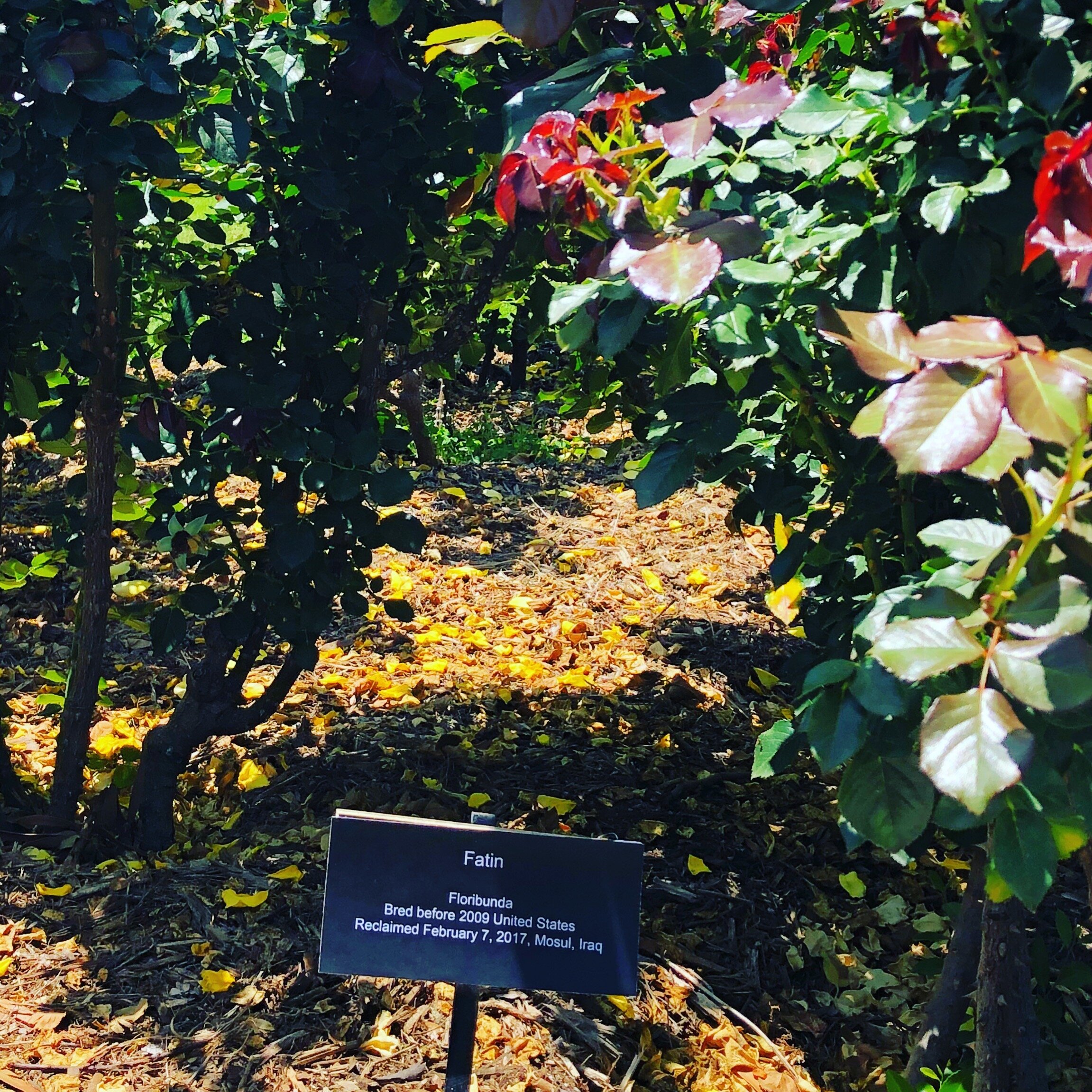
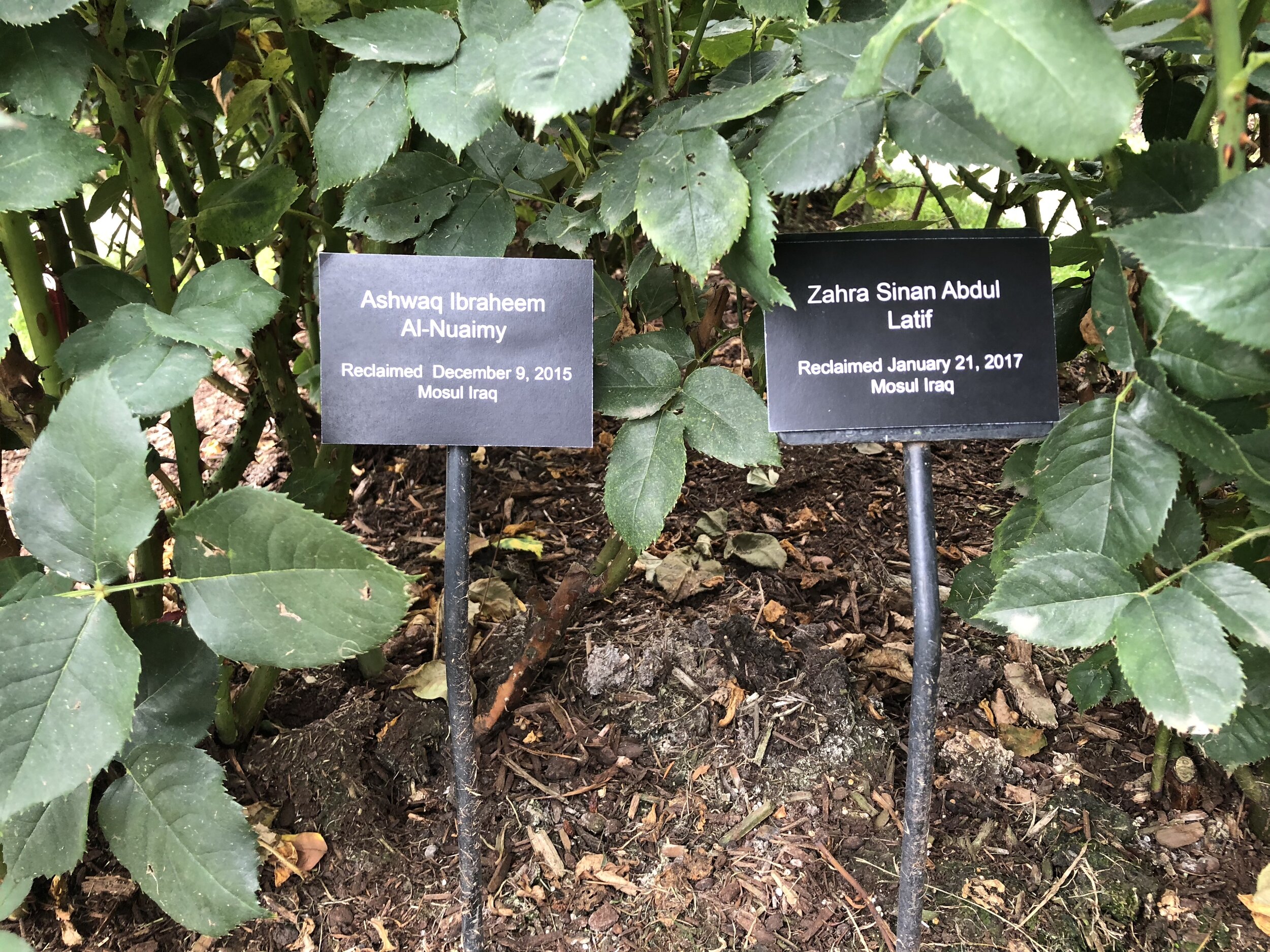
Golestan Revisited, Renamed Roses at Occidental College and Select Other Sites, 2017-2018

